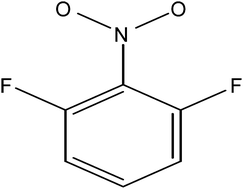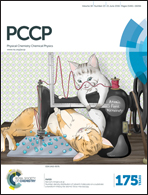A re-investigation of 4JFF and 5JFF nuclear spin–spin couplings in substituted benzenes, a novel conformational tool
Abstract
A theoretical analysis of the 4JFF and 5JFF couplings in fluorobenzenes separates the σ and π components of the substituent coefficients. The π bond mechanism is dominant but the σ bond mechanism must be included to give accurate values of the couplings. For monosubstituted difluorobenzenes the 4JFF and 5JFF couplings can be predicted from the calculated π densities by linear equations. The use of additive substituent effects allows the prediction of the meta4JFF couplings for multisubstituted compounds. The π dependence of the 4JFF coupling in 2,6-difluorobenzenes provides a novel and simple method of determining the torsional angle of the C1 substituent and the benzene ring for non-symmetrical functional groups (acetyl, carboxymethyl, dimethylamino, amide, nitro etc.). This could be used to determine the geometries of such molecules in biological systems. The π dependence of the 4JFF coupling is also of importance in the charged species of 2,6-difluoroanilinium (4JFF 2.1 Hz) and 2,6-difluoro-N,N,N-trimethylanilinium (4JFF 0.0 Hz) due to the very different π electron densities.


 Please wait while we load your content...
Please wait while we load your content...